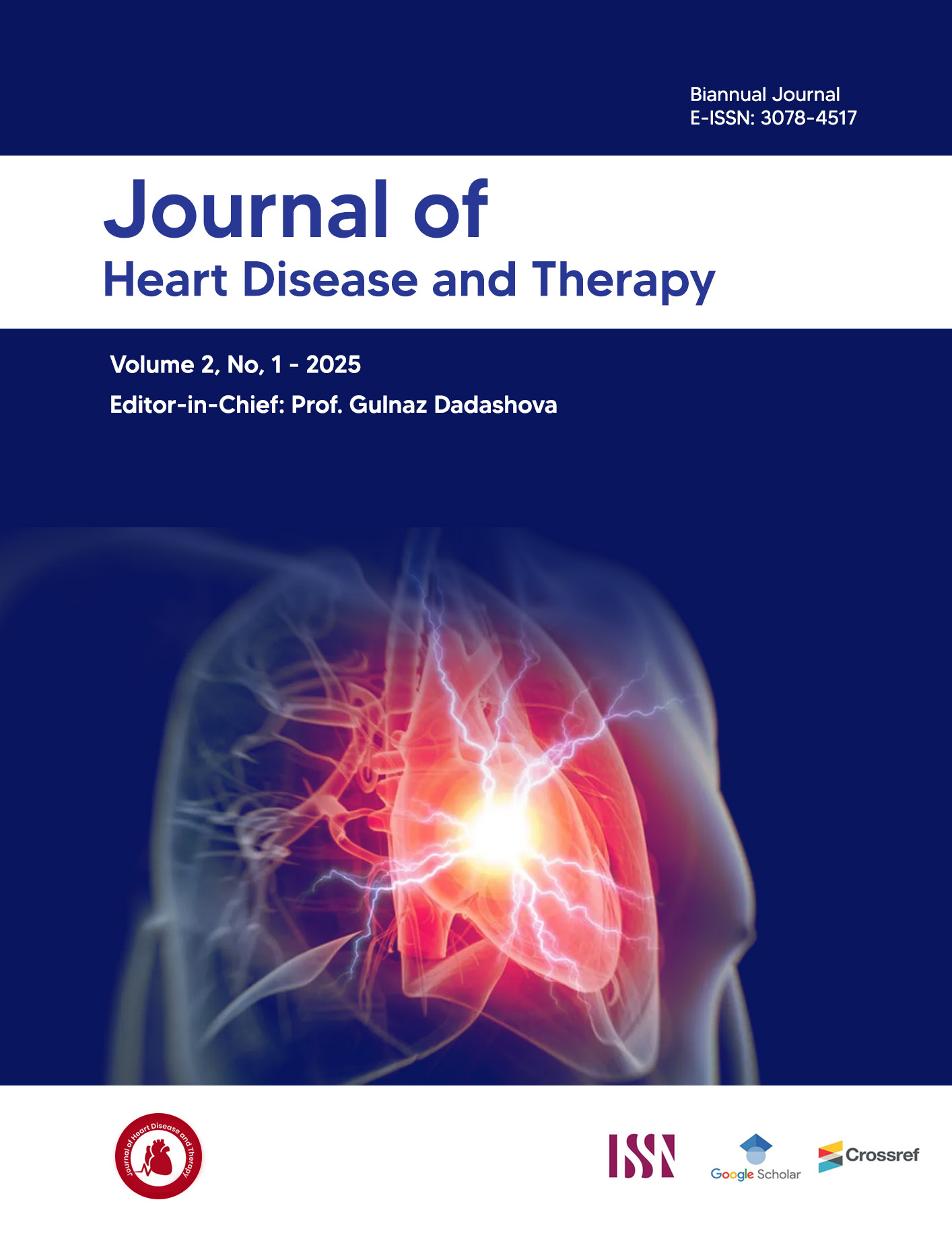Clinical and Laboratory Features of Patients with Heart Failure (HFrEF vs. HFmrEF): a Retrospective Evaluation
DOI:
https://doi.org/10.71295/JHDT.2024.010110Keywords:
Heart failure, HFrEF, HFmrEF, NT-proBNP, treatment optimization.Abstract
Heart failure (HF) remains a leading cause of mortality worldwide, with variations in clinical characteristics and treatment approaches based on ejection fraction (EF). This retrospective study analyzed 1123 patients with chronic HF admitted to the Research Institute of Cardiology from September 2022 to September 2024, comparing two groups: HF with reduced EF (HFrEF, EF ≤40%, n=794) and HF with mildly reduced EF (HFmrEF, EF 41-49%, n=329). Significant differences were observed in etiology, with ischemic and hypertensive HF more frequent in HFmrEF, while idiopathic dilated cardiomyopathy was predominant in HFrEF. Patients with HFmrEF exhibited higher systolic and diastolic blood pressure (p<0.001 and p<0.005, respectively), whereas NT-proBNP levels were significantly higher in HFrEF (p<0.05). Despite guideline recommendations, the use of ARNIs and SGLT2 inhibitors remained low (~30% and 26%, respectively), likely due to insurance limitations. The study highlights the need for optimized treatment strategies and improved access to guideline-directed therapies for HFmrEF patients.
Downloads
Downloads
Published
How to Cite
Issue
Section
License
Copyright (c) 2024 Z.K. Rakhmanov, A.B. Hajiyev, Gulnaz Dadashova, S.A. Alieva Alieva, Cahan Qurbanova, G.I. Mammadova, Gurbanova Jahan

This work is licensed under a Creative Commons Attribution-NonCommercial-NoDerivatives 4.0 International License.








